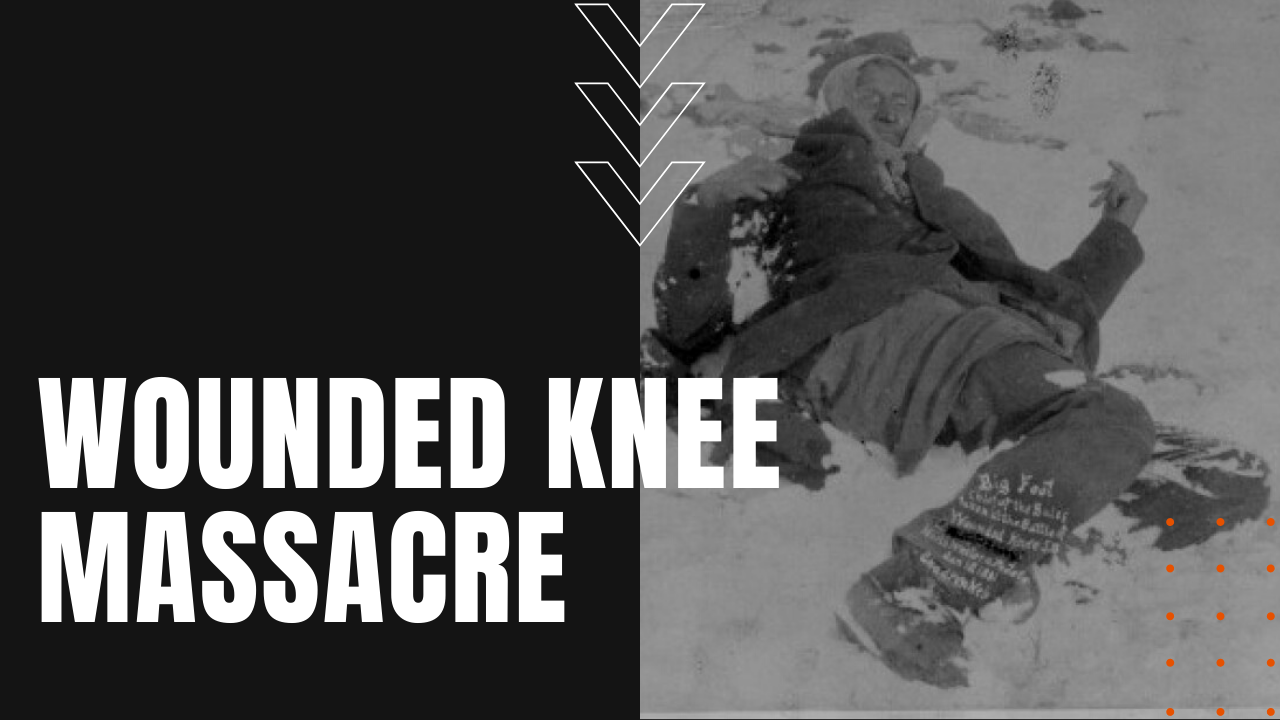Wounded Knee Massacre: 7th Cavalry Attack Over Lakota Ghost Dance

Throughout 1890, the U.S. government worried about the increasing influence at Pine Ridge Indian Reservation in South Dakota of the Ghost Dance spiritual movement, which taught that Indians had been defeated and confined to reservations because they had angered the gods by abandoning their traditional customs and embracing those of the white man.
Lakota Ghost Dance
Many Lakota believed that if they practiced the Ghost Dance and rejected the ways of the white man, the gods would create the world anew and destroy all non-believers, including all non-Indians. In response, on December 15th, 1890, reservation police tried to arrest Sitting Bull, the famous Lakota chief, who they mistakenly believed was a Ghost Dancer. When Sitting Bull died in police custody, tensions at Pine Ridge escalated toward war.
What Happened at Wounded Knee?
On December 29th, the U.S. Army’s 7th Cavalry surrounded a band of Ghost Dancers near Wounded Knee Creek on the Pine Ridge Reservation, demanding that the Lakota, led by Chief Big Foot, surrender their weapons peacefully. One version of events claims that during the process of disarming the Lakota, a deaf tribesman named Black Coyote was reluctant to give up his rifle, claiming he had paid a lot of money for it. When an American soldier attempted to seize the weapon by force, the rifle went off, prompting the U.S. Army to begin systematically shooting down innocent and mostly disarmed Lakota people.
The brutal and quite one-sided massacre took the lives of an estimated 300 Lakota, nearly half of them women and children. For its part, the U.S. Army lost 25 men, with another 39 wounded. The conflict at Wounded Knee was originally referred to as a battle, but in reality, it was a tragic and completely avoidable massacre of innocent lives.
Surrounded by heavily armed troops, most historians believe it was highly unlikely that Big Foot’s band would have intentionally picked a fight, while others have speculated that the soldiers of the 7th Cavalry were deliberately taking revenge for the regiment’s defeat at Little Bighorn in 1876. Whatever the motives, the massacre ended the Ghost Dance movement and was the last major confrontation in America’s deadly war against the Plains Indians.
7th Calvary: Recognition Followed By Regret
After the massacre, twenty soldiers were awarded the Medal of Honor, while in 2001, the National Congress of American Indians passed two resolutions condemning the military awards and calling on the federal government to rescind them. The Wounded Knee site has been designated a National Historic Landmark by the Department of the Interior, while in 1990, both houses of the U.S. Congress passed a resolution on the historical centennial of the massacre, expressing “deep regret” for the conduct of the 7th Cavalry and the subsequent loss of life suffered by the Lakota.
